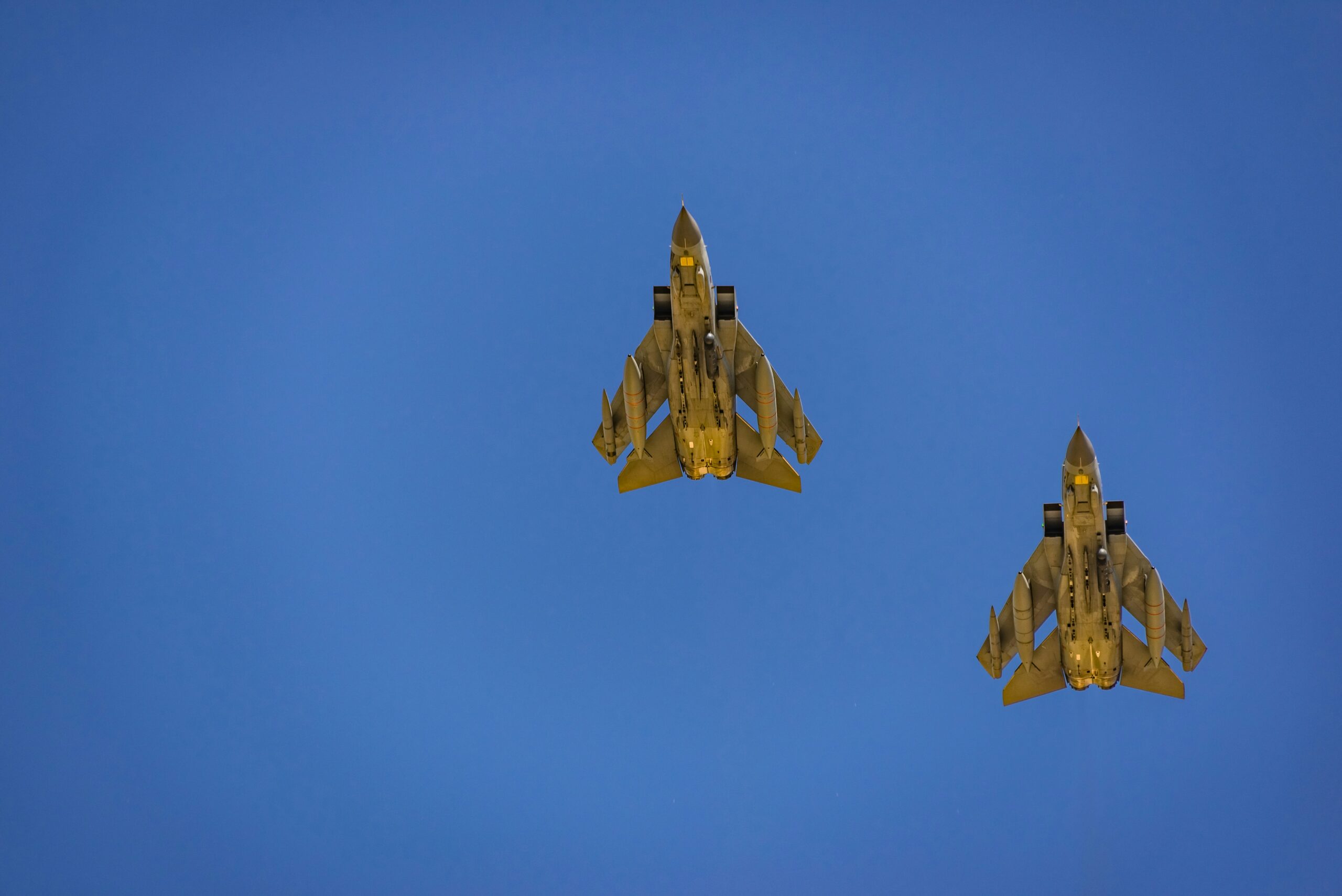Military optics are known for their precision and reliability, but just how accurate are they? In this article, we will explore the performance of military optics and delve into the factors that contribute to their accuracy. From advanced targeting systems to high-resolution scopes, we will examine how these optics play a crucial role in enhancing the accuracy and effectiveness of military operations. Whether you are a military enthusiast or simply curious about the capabilities of these sophisticated devices, join us as we uncover the truth behind the accuracy of military optics in general.
Different Types of Military Optics
Binoculars and Spotting Scopes
Binoculars and spotting scopes are essential tools for military personnel to observe distant targets and enhance situational awareness. Binoculars, with their two parallel optical tubes, provide magnified views and help in judging distances and identifying targets. Spotting scopes, on the other hand, offer higher magnification and a more stabilized view, making them ideal for long-range surveillance and target identification.
Riflescopes and Sights
Riflescopes and sights are critical components for shooters in the military. Riflescopes are designed to be mounted on firearms and provide a magnified view of the target, allowing for precise aiming and accurate shot placement. They often come with adjustable turrets and reticles, enabling shooters to compensate for bullet drop and wind drift. Sights, such as reflex sights and holographic sights, provide a simplified aiming solution for close to mid-range engagements, ensuring quick target acquisition and accurate shots.
Night Optics
Night optics, including night vision devices (NVDs) and thermal imaging scopes, play a vital role in military operations conducted during low-light or no-light conditions. Night vision devices amplify available light or detect near-infrared radiation to generate a visible image, enabling soldiers to see in the dark. Thermal imaging systems, on the other hand, capture heat signatures emitted by objects, providing a clear view of the surrounding environment even in complete darkness.
Thermal Imaging Systems
Thermal imaging technology has revolutionized military optics by allowing troops to detect and engage targets based on their heat signatures. These systems can cut through fog, smoke, or camouflage, providing an advantage in identifying targets or potential threats. Thermal imaging systems have proven to be invaluable in counterinsurgency operations, surveillance, and search and rescue missions.
Factors Influencing the Accuracy of Military Optics
Quality of Glass
The quality of the glass used in military optics greatly impacts their accuracy. High-quality glass ensures maximum light transmission, resulting in clear and sharp images. The use of low-dispersion glass minimizes chromatic aberration, enhancing image clarity and color accuracy. Optics with inferior glass may suffer from reduced light transmission and distortion, leading to decreased accuracy in target identification and engagement.
Reticle Type
The type of reticle used in military optics influences the accuracy of target acquisition and aiming. Reticles come in various forms, including duplex, mil-dot, and BDC (Bullet Drop Compensator) reticles, among others. Each type has its advantages and disadvantages. For instance, BDC reticles allow for quick range estimation and compensation for bullet drop, while mil-dot reticles provide precise holdovers for windage and elevation. The choice of reticle depends on the specific mission requirements and personal preferences of the user.
Mounting System
The mounting system plays a crucial role in maintaining the stability and accuracy of military optics. Securely attaching the optics to the firearm reduces the chance of point-of-impact shifts and ensures consistent shot placement. Different mounting systems, such as Picatinny, Weaver, or quick-detach mounts, offer varying levels of rigidity and ease of use. Selecting the appropriate mounting system based on the specific firearm and intended use is essential for achieving optimal accuracy.
Optical Coatings
Optical coatings applied to the lenses of military optics can significantly enhance their performance and accuracy. Anti-reflective coatings minimize light reflections, allowing more light to pass through the lenses and reach the user’s eyes. This improves image brightness, contrast, and clarity, particularly in low-light conditions. Additionally, coatings like hydrophobic and oleophobic coatings repel water, oil, and dirt, preventing obstruction and maintaining image quality even in challenging environments.

The Role of Magnification in Accuracy
Understanding Magnification
Magnification refers to the degree of enlargement of the target image seen through military optics. Higher magnification allows for a closer and more detailed view of the target, aiding in precise target identification and aiming. However, it is important to note that higher magnification is not always favorable in all situations, as it can also amplify movement and vibrations, potentially affecting accuracy.
Impact of High Magnification
While high magnification can be beneficial for long-range engagements, it comes with certain drawbacks. Increased magnification amplifies any user movement or shake, making it more challenging to maintain a steady aim. This can result in decreased accuracy, especially when shooting on the move or in dynamic combat scenarios. Additionally, the field of view narrows as magnification increases, reducing situational awareness and making it harder to track moving targets.
Low versus High Magnification for Different Situations
The choice of magnification depends on the specific scenario and engagement requirements. Low magnification is often preferred in close-quarters or urban environments, as it allows for a wider field of view, quick target acquisition, and easier tracking of moving targets. On the other hand, high magnification excels in long-range engagements, providing fine details and precise aiming capabilities. Military optics that offer variable magnification allow users to adapt to different situations and strike a balance between situational awareness and target precision.
The Importance of Optical Coatings
Types of Optical Coatings
Optical coatings serve multiple purposes, including improving light transmission, reducing glare, and protecting lenses from scratches and damage. There are various types of coatings used in military optics, such as anti-reflective coatings, phase-correcting coatings, and scratch-resistant coatings. Each coating has a specific function and contributes to image quality and overall accuracy.
Implication on Image Quality
Optical coatings significantly impact image quality by reducing reflections and increasing light transmission. Anti-reflective coatings minimize the amount of light reflected off the lens surfaces, resulting in brighter and clearer images. Phase-correcting coatings correct for the phase shift caused by the lens shape, enhancing image sharpness and contrast. By enhancing the optical properties of the lenses, coatings improve target visibility and aid in accurate target identification and engagement.
Role in Reducing Glare and Reflection
Glare and reflection can negatively affect the accuracy of military optics, especially when operating in bright or sunny environments. Optical coatings, particularly anti-reflective coatings, effectively reduce glare and unwanted reflections, allowing for a clearer view of the target. By minimizing distractions caused by glare and reflections, military personnel can maintain focus on the target and achieve improved accuracy.

Understanding Reticles and their Contribution to Accuracy
Different Types of Reticles
Reticles, also known as crosshairs or aiming points, come in various shapes and configurations. Each type of reticle offers specific advantages and considerations for accuracy. Common reticle types include duplex, mil-dot, BDC, illuminated, and holographic reticles, among others. Understanding the characteristics and features of each reticle type is essential for selecting the most suitable option based on mission requirements and shooting preferences.
Advantages and Disadvantages of Commonly Used Reticles
Different reticles present unique advantages and disadvantages that can impact accuracy. For example, duplex reticles offer a simple and unobtrusive design, allowing for fast target acquisition. Mil-dot reticles provide precise holdovers for elevation and windage adjustments, enabling accurate long-range shots. However, more complex reticles may require additional time and training to master, potentially affecting speed and ease of use.
Selection of Reticles based on Mission Requirements
The selection of the reticle depends on the nature of the mission and the intended use of the military optics. Each mission may require different features and capabilities. Some scenarios may call for quick target acquisition and engagement, while others demand precise long-range shots. By considering mission requirements and operational objectives, military personnel can choose the most appropriate reticle that maximizes accuracy and overall effectiveness.
Mounting Systems and their Impact on Accuracy
Types of Mounting Systems
Mounting systems for military optics come in various designs to suit different firearm platforms and user preferences. The most common mounting systems include Picatinny rails, Weaver mounts, and quick-detach systems. Picatinny rails provide a standardized interface for attaching accessories, including optics, to firearms, ensuring a secure and repeatable connection. Weaver mounts offer similar functionality but have a different cross-sectional shape. Quick-detach systems provide the convenience of rapid attachment and detachment of optics, allowing for easy transition between different firearms or configurations.
Effects of Proper and Improper Mounting
Proper mounting of military optics is essential for maintaining zero, the point of impact, and consistent accuracy. A securely mounted optic ensures that it remains aligned with the firearm and does not shift during recoil or under normal use. Improper mounting, such as loose screws or misalignment, could result in a shift in the point of impact, leading to reduced accuracy and the need for constant readjustment.
Choosing the Right Mounting System
Selecting the appropriate mounting system depends on several factors, including the firearm type, intended use, and personal preferences. Factors to consider include the availability of compatible mounting options, the rigidity of the mounting system, ease of installation and adjustment, and the stability of the attachment. By considering these factors, military personnel can choose a mounting system that provides the necessary stability and accuracy required for their specific mission needs.

Durability of Military Optics
Manufacturing and Material Considerations
Durability is a crucial factor for military optics, as they are subjected to rigorous use in demanding environments. High-quality manufacturing and the use of robust materials contribute to the durability and longevity of the optics. Optics constructed with aircraft-grade aluminum or advanced polymers offer increased resistance to impact, recoil, and extreme temperatures, ensuring optimal performance and accuracy even under harsh conditions.
Resistance to Environmental Factors
Military optics are often exposed to various environmental factors, such as moisture, dust, extreme temperatures, and shock. Optics with proper sealing and waterproofing features protect internal components from moisture and allow for use in wet conditions. Dust and debris resistance prevents obstruction of lenses, ensuring clear and unobstructed views. Additionally, military optics designed to withstand extreme temperatures maintain accurate performance even in freezing cold or scorching hot environments.
Maintenance and Effect on Accuracy
Regular maintenance of military optics is essential for preserving accuracy and prolonging their lifespan. Following manufacturer-recommended cleaning procedures and storing optics in protected cases or pouches prevents potential damage and degradation. Failure to maintain optics can lead to lens contamination, reduced light transmission, and decreased image quality, ultimately impacting accuracy. Proper care, including routine cleaning, inspection, and preventive maintenance, helps ensure optimal accuracy and reliability in the field.
Night Optics and Thermal Imaging Accuracy
Technology behind Night Optics
Night optics, such as night vision devices (NVDs), rely on various technologies to enable vision in low-light or no-light conditions. Image intensification technology amplifies available light, including moonlight or ambient artificial light, to produce a visible image. NVDs provide green-hued images due to the wavelength of light that is most efficiently amplified. This technology greatly enhances situational awareness and accuracy in dark environments.
Understanding Thermal Imaging
Thermal imaging systems operate based on the detection and interpretation of heat signatures emitted by objects. Infrared radiation emitted by objects is converted into electronic signals, which are then processed and displayed as a thermal image. Thermal imaging allows for the detection and identification of living beings, equipment, and potential threats even in complete darkness. This technology significantly contributes to accuracy during nighttime operations and surveillance.
Assessing the Accuracy of Night and Thermal Optics
The accuracy of night and thermal optics depends on several factors, including resolution, detection range, and image clarity. Higher resolution sensors provide more detailed images, allowing for precise target identification and engagement. The detection range determines how far the optics can effectively detect and identify targets. Additionally, image clarity and contrast contribute to accuracy by providing clear and distinct views of the surrounding environment and targets. Advances in night and thermal optics technology have significantly increased accuracy, enabling military personnel to operate effectively during nighttime operations.
Accuracy of Military Optics in Unfavorable Conditions
Issues with Thermal Imaging in Hot Climates
Thermal imaging systems can face challenges in hot climates due to the abundance of thermal radiation from the environment itself. In extremely hot conditions, such as deserts, the temperature differential between targets and the surroundings might not be sufficient for accurate target detection and identification. High ambient temperature can reduce the effectiveness of thermal imaging technology, potentially affecting accuracy and overall performance.
Challenges with Night Optics in Dense Forests
Night optics can encounter difficulties in dense forest environments due to the limited available light and potential obstructions. The dense foliage can obstruct the transmission of ambient light, hindering the performance of image intensification technology. Shadows and varying light conditions can create challenging viewing conditions, affecting target visibility and accuracy. In such scenarios, the use of thermal imaging systems may provide an advantageous alternative for accurate target detection.
Accuracy of Optical Systems in Extreme Weather
Military operations often take place in extreme weather conditions, including heavy rain, snow, or high humidity. Optics designed for military use are typically weather-sealed and built to withstand harsh environments. However, extreme weather can still impact accuracy to some extent. Rain or snow can obstruct lenses and lead to reduced image quality, affecting target visibility. High humidity or rapid temperature changes can cause fogging, leading to blurred images and decreased accuracy. Proper maintenance and protection measures can help mitigate these issues and ensure optimal accuracy under adverse weather conditions.
Advancements in Military Optics Technology
Latest Technological Developments
The field of military optics continuously evolves with the introduction of new technologies and advancements. Recent developments include improved image resolution, enhanced low-light performance, and more compact and lightweight designs. Enhanced zoom capabilities, faster target acquisition systems, and improved reticle designs have also emerged. Additionally, the integration of digital technology has given rise to advanced features, such as rangefinders, ballistic calculators, and wireless connectivity, further enhancing accuracy and operational effectiveness.
Implications for Accuracy
The latest technological advancements have had significant implications for the accuracy of military optics. Higher image resolution allows for better target identification and reduced target misinterpretation. Improved low-light performance extends operational capabilities during low-light conditions, resulting in enhanced accuracy. Compact and lightweight designs make optics easier to carry and maneuver, enabling faster target acquisition and accurate shots. The integration of additional features and smart technologies streamlines the aiming process and provides advanced data analysis, contributing to improved accuracy.
Future Trends and Predictions
The future of military optics is anticipated to include further advancements in technology, driven by the need for increased accuracy and operational effectiveness. Advancements in materials and manufacturing processes may result in even more durable and reliable optics. Improvements in image processing algorithms and artificial intelligence may enable faster and more accurate target detection and classification. Additionally, increased connectivity with other battlefield systems and the integration of augmented reality may revolutionize how military personnel acquire targets and engage threats. The ongoing quest for accuracy and precision will continue to shape the future of military optics.
